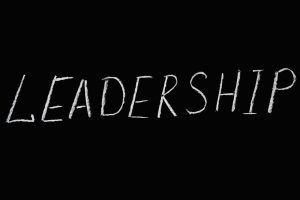 In our ever-evolving world of technology, innovation serves as the fuel for growth and market dominance. Behind every major innovation lies a leadership style that steers the organization towards groundbreaking successes. Companies like Netflix, Spotify, Salesforce, Airbnb, NVIDIA, Amazon, Google, Apple, and Tesla have not only shaped industries but redefined what innovation looks like. At the core of their success is a shared trait: visionary leadership that influences every decision, strategy, and culture within the organization. This article delves into how leadership directly impacts tech innovation and the lessons other organizations can learn from these industry giants.
In our ever-evolving world of technology, innovation serves as the fuel for growth and market dominance. Behind every major innovation lies a leadership style that steers the organization towards groundbreaking successes. Companies like Netflix, Spotify, Salesforce, Airbnb, NVIDIA, Amazon, Google, Apple, and Tesla have not only shaped industries but redefined what innovation looks like. At the core of their success is a shared trait: visionary leadership that influences every decision, strategy, and culture within the organization. This article delves into how leadership directly impacts tech innovation and the lessons other organizations can learn from these industry giants.
1. Visionary Leadership as a Catalyst for Innovation
Crafting a Bold Vision: Exceptional tech leaders such as Steve Jobs at Apple and Elon Musk at Tesla are renowned for their ability to craft visions that go beyond the immediate, charting a course into the future. Jobs reimagined personal computing and mobile technology, while Musk has revolutionized both transportation and space exploration. These leaders didn’t just set goals, they articulated a transformative vision that inspired and guided their teams to reach new heights.
Balancing Long-Term Strategy with Immediate Execution: Leadership at companies like Amazon and Google highlights the importance of balancing long-term innovation with short-term execution. Jeff Bezos’ focus on future growth, from investing in cloud computing to exploring space travel, reflects strategic foresight that allows Amazon to dominate across industries. Similarly, Sundar Pichai’s leadership at Google continues to push the boundaries of AI, quantum computing, and cloud technologies while maintaining current business growth.
Takeaway: A clear, inspiring vision motivates teams and directs efforts towards meaningful innovation. Leaders must not only set visionary goals but also communicate them effectively, aligning them with long-term business objectives and current market needs.
2. Empowering Employees to Innovate through Autonomy
Fostering an Ownership Mentality: Industry giants like Netflix and Spotify have proven that empowering employees with autonomy can drive innovation. Netflix’s “freedom and responsibility” culture enables employees to experiment, take calculated risks, and push creative boundaries. This lack of micromanagement encourages risk-taking, which is often the precursor to innovative breakthroughs.
Building Trust: Leaders at Airbnb and Salesforce have embedded trust into their organizational fabric. By giving teams the autonomy to make decisions, explore new ideas, and iterate rapidly, these companies foster a culture where creativity thrives. Salesforce, in particular, has empowered its teams to take ownership of its cloud-based solutions, leading to consistent industry leadership in customer relationship management (CRM).
Takeaway: Empowerment through autonomy and trust creates an environment where employees feel valued and motivated to contribute their best ideas. Leaders must trust their teams and provide the freedom necessary for creativity to flourish.
3. Encouraging Collaboration and Open Communication
Breaking Silos for Innovation: At Google, collaboration is a key driver of its most groundbreaking innovations. The development of products like Google Maps and Gmail was fueled by cross-functional collaboration, where teams worked together to create solutions that redefined user experiences. Open communication allows ideas to flow freely, fostering a culture of continuous improvement and experimentation.
Leveraging Collaborative Workspaces: Companies like NVIDIA and Amazon have successfully harnessed the power of collaborative workspaces, both physical and digital. Tools like AWS and NVIDIA’s research-driven culture encourage cross-team collaboration, enabling the exchange of ideas that lead to transformative solutions in AI, cloud computing, and graphics technology.
Takeaway: Leaders must create environments where collaboration is the norm, and communication flows freely. Encouraging cross-departmental teamwork and breaking down silos can lead to innovations that might not have been possible in isolated environments.
4. Embracing Risk and Building Resilience
Leaders as Risk Takers: Iconic leaders such as Elon Musk (Tesla) and Jeff Bezos (Amazon) have taken calculated risks that paved the way for industry-shaping innovations. Tesla’s gamble on electric vehicles and SpaceX’s pursuit of commercial spaceflight are testaments to how visionary leaders embrace risk as a means to reshape entire industries.
Learning from Failures: Apple, once on the brink of bankruptcy, turned failure into success by learning from past mistakes. Its leadership’s ability to pivot, innovate, and take risks led to the iPhone, a product that fundamentally changed the way we communicate. Leaders at these companies view setbacks as opportunities to improve and innovate further.
Takeaway: True innovation requires a culture that doesn’t shy away from risks and failures. Leaders must foster resilience, encouraging teams to view challenges as stepping stones to breakthrough ideas.
5. Investing in Talent and Resources to Drive Innovation
Building High-Performance Teams: Innovative organizations like Google, Apple, and Tesla focus heavily on attracting, retaining, and nurturing top talent. By creating an environment where the brightest minds can collaborate and thrive, these companies ensure that innovation remains at the core of their success. Apple’s emphasis on hiring individuals with diverse skill sets and passions has resulted in products that continually push the boundaries of technology.
Supporting Innovation with Resources: Visionary leaders don’t just stop at hiring top talent; they invest in the necessary resources to help these teams succeed. Companies like Amazon and NVIDIA provide access to cutting-edge technology, data, and tools that enable their teams to experiment, develop, and deliver world-class innovations.
Takeaway: A strong focus on talent acquisition, coupled with significant investments in resources, allows teams to innovate without constraints. Leaders must ensure their teams have the tools, technology, and environment needed to drive innovation.
6. Customer-Centric Innovation as a Growth Strategy
Prioritizing the Customer’s Voice: Industry leaders like Airbnb and Salesforce are deeply customer-centric. By continually listening to customer feedback, these companies innovate in ways that directly address market needs. Salesforce’s innovations in cloud-based CRM solutions have been shaped by the evolving demands of businesses worldwide, allowing them to stay at the forefront of enterprise solutions.
Enhancing User Experiences: Netflix’s commitment to improving viewer experiences through data-driven innovation is a prime example of how customer-centricity leads to sustained success. By analyzing user preferences and viewing habits, Netflix continually refines its product offerings, keeping it ahead of competitors in the streaming industry.
Takeaway: Customer feedback is a powerful driver of innovation. Leaders who prioritize understanding and meeting customer needs are more likely to create products and services that resonate with the market and ensure long-term success.
Leadership and Innovation Are Inseparable
In today’s technology-driven world, innovation and leadership are two sides of the same coin. The leadership practices of industry giants like Apple, Tesla, Amazon, and Google offer valuable lessons in how effective leadership directly impacts a company’s ability to innovate. From crafting a visionary direction to fostering a culture of collaboration, empowerment, and resilience, the actions and decisions of leaders create the foundation upon which innovation thrives.
If you aim to foster sustained innovation in your organization, embrace these leadership principles. By cultivating a visionary mindset, empowering your teams, embracing risks, investing in talent, and keeping the customer at the center of your innovation strategy, you can unlock your organization’s potential to lead in today’s competitive tech landscape.

 We’ve all heard the phrase, “people are our greatest asset,” but how many leaders truly invest in transforming that asset into something extraordinary? Hiring talented individuals is crucial, but the real challenge lies in nurturing, developing, and growing that talent alongside your organisation. The question I was recently asked is, how do you turn potential into performance and ambition into achievement?
We’ve all heard the phrase, “people are our greatest asset,” but how many leaders truly invest in transforming that asset into something extraordinary? Hiring talented individuals is crucial, but the real challenge lies in nurturing, developing, and growing that talent alongside your organisation. The question I was recently asked is, how do you turn potential into performance and ambition into achievement? In a high-pressure tech environment, where innovation and speed are key, a one-size-fits-all approach to problem-solving simply won’t work. The real magic happens when you harness the diverse problem-solving styles that exist within your team, using them to tackle challenges from multiple angles. Yet, many organizations fail to recognize this potential, leading to missed opportunities and stifled creativity. So, how do you make sure you’re getting the best out of your team?
In a high-pressure tech environment, where innovation and speed are key, a one-size-fits-all approach to problem-solving simply won’t work. The real magic happens when you harness the diverse problem-solving styles that exist within your team, using them to tackle challenges from multiple angles. Yet, many organizations fail to recognize this potential, leading to missed opportunities and stifled creativity. So, how do you make sure you’re getting the best out of your team? Every successful team, whether on the pitch or in the boardroom, has a playbook, a strategic guide that keeps everyone aligned and moving towards victory. Yet, when it comes to IT Programs and PMOs (Project Management Offices), many organisations still operate without a cohesive plan, risking inefficiency, miscommunication, and project failure. If you think your team is performing reasonably well right now. Imagine what your IT department could achieve with a well-crafted playbook that not only guides project execution but empowers your team to deliver results on time, every time.
Every successful team, whether on the pitch or in the boardroom, has a playbook, a strategic guide that keeps everyone aligned and moving towards victory. Yet, when it comes to IT Programs and PMOs (Project Management Offices), many organisations still operate without a cohesive plan, risking inefficiency, miscommunication, and project failure. If you think your team is performing reasonably well right now. Imagine what your IT department could achieve with a well-crafted playbook that not only guides project execution but empowers your team to deliver results on time, every time. Managing a remote team presents unique challenges, from ensuring clear communication to maintaining team cohesion across dispersed locations. However, when handled effectively, remote work can offer flexibility and productivity advantages. This guide focuses on key strategies to manage your remote team successfully while also making considerations for hybrid situations.
Managing a remote team presents unique challenges, from ensuring clear communication to maintaining team cohesion across dispersed locations. However, when handled effectively, remote work can offer flexibility and productivity advantages. This guide focuses on key strategies to manage your remote team successfully while also making considerations for hybrid situations. Leadership is the bedrock of organizational success. Great leaders inspire, motivate, and guide their teams towards shared goals. But what truly defines a successful leader, and how can you incorporate impactful leadership strategies into your organization? In this article we delve into the core insights and actionable strategies that can elevate your leadership effectiveness.
Leadership is the bedrock of organizational success. Great leaders inspire, motivate, and guide their teams towards shared goals. But what truly defines a successful leader, and how can you incorporate impactful leadership strategies into your organization? In this article we delve into the core insights and actionable strategies that can elevate your leadership effectiveness. In project management, the delicate balance between technical and business priorities is the key to delivering projects that truly drive success. On one side, technical teams are laser-focused on developing innovative, reliable, and scalable solutions. On the other, business stakeholders are concerned with aligning projects to strategic goals, managing budgets, and ensuring timely market delivery. Harmonizing these priorities ensures that projects meet technical excellence and drive business value.
In project management, the delicate balance between technical and business priorities is the key to delivering projects that truly drive success. On one side, technical teams are laser-focused on developing innovative, reliable, and scalable solutions. On the other, business stakeholders are concerned with aligning projects to strategic goals, managing budgets, and ensuring timely market delivery. Harmonizing these priorities ensures that projects meet technical excellence and drive business value. “Imagine a work environment where every interaction feels effortless, and every team member performs at their peak potential.”
“Imagine a work environment where every interaction feels effortless, and every team member performs at their peak potential.” Ignore the outdated debate about AI replacing humans. The future is not man vs. machine, but rather a powerful collaboration, humans and AI working together to unlock new possibilities. Where AI isn’t seen as a competitor but as the ultimate ally. From helping developers write better code to enhancing customer service interactions in real time, AI is revolutionizing work by amplifying human capabilities. This isn’t just another tech trend, it’s a seismic shift transforming workplaces globally, and those who embrace it are reaping the rewards.
Ignore the outdated debate about AI replacing humans. The future is not man vs. machine, but rather a powerful collaboration, humans and AI working together to unlock new possibilities. Where AI isn’t seen as a competitor but as the ultimate ally. From helping developers write better code to enhancing customer service interactions in real time, AI is revolutionizing work by amplifying human capabilities. This isn’t just another tech trend, it’s a seismic shift transforming workplaces globally, and those who embrace it are reaping the rewards. “If you’re not taking risks, you’re not growing.” We’ve all heard some variation of this phrase, and while it may sound like a cliché, it’s a reality that every successful professional knows all too well. But what does it really mean to take risks in your career? Why is it crucial for your growth, and how do you know which risks are worth taking?
“If you’re not taking risks, you’re not growing.” We’ve all heard some variation of this phrase, and while it may sound like a cliché, it’s a reality that every successful professional knows all too well. But what does it really mean to take risks in your career? Why is it crucial for your growth, and how do you know which risks are worth taking?